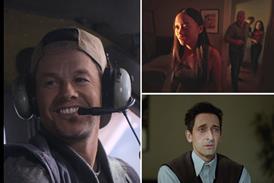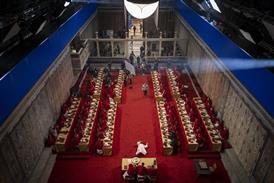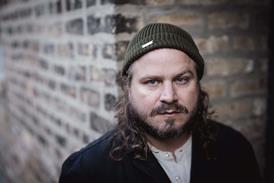Local producers lobby government for funding while Creative Scotland struggles to attract film director.
A string of missteps have left the Scottish film industry facing significant challenges, according to leading industry and politicians.
Despite generating a handful of hits in the past year and the publication of a new report highlighting the need for a major new film and TV studio, the Scottish film industry currently lacks proper infrastructure, production support and leadership, according to experts.
Recent setbacks include Pinewood Studios choosing Wales ahead of Scotland as the location for a major new film and TV studio, a damning Creative Scotland report calling for a long-term strategy to revive the flagging industry and the same organisation’s ongoing struggle to fill the newly created position of film director.
Production
“There is definitely a crisis in the sense that local film production has had nearly all its local sustenance withdrawn,” said Iain Smith, veteran Scottish producer and chair of the British Film Commission.
“There’s very little going on in terms of giving filmmakers opportunities.”
Creative Scotland currently allocates around £3.5m ($5.8m) of its £100m ($166m) annual budget to film production, largely divided between six or seven films per year at a maximum of £300,000 ($500,000) each.
“There has been a lack of company development and producer support since 2008,” said Sigma Films’ Gillian Berrie. “Vital Glasgow Film Office money, which always helped with productions or getting to festivals, was also cut by Scottish Enterprise.”
Berrie was one of a number of producers to meet last week with the Scottish government’s John Swinney, Cabinet Secretary for Finance, Employment and Sustainable Growth, and Fiona Hyslop, Cabinet Secretary for Culture and External Affairs, as well as Creative Scotland CEO Janet Archer.
“Talks have been constructive,” said Berrie. “But when the secretaries saw the comparative numbers for film and TV investment in Ireland, they could see that we were lagging far behind. They are now investigating the potential for additional investment.”
But what of recent successes such as Sunshine on Leith, Filth and Starred Up (The Railway Man and Under the Skin also filmed in Scotland), all of which had significant Scottish input?
“Scotland has the ability to make films in spades,” acknowledged Smith. “The talent is there. But these are hand-to-mouth existences. A lot of the recent successes are financed out of Scotland, and controlled from out of Scotland.”
In response to a question about the perceived lack of funding for production and infrastructure, a spokesperson for the Scottish Government told Screen: “The Scottish Government has a keen interest, shared with the sector, in seeing film develop further, to build on existing support and on the recent success of several Scottish films. This will not only support our creative economy – but will make a valuable cultural contribution.”
Infrastructure
The industry’s biggest bugbear continues to be Scotland’s lack of a major film studio. It has been a frustration for decades.
Industry were recently left disappointed when the Scottish government, Creative Scotland and Scottish Enterprise failed to capitalise on an opportunity for Pinewood to build a new facility in the country, opting for Wales instead.
“Pinewood’s global brand would have delivered production here, it would have sustained the Scottish industry and provided more capacity,” said Smith. “It’s certainly a missed opportunity.”
Impetus for a new studio must come from the government, he added: “We need strategic intervention from the Scottish government so that developers can come in and build a studio. It doesn’t need to be a grand affair, but it has to be functionally built for purpose.”
The government is now moving in the right direction. A “long-overdue” Scottish Enterprise-commissioned feasibility report into a new film studio in the region was published this morning.
The report identifies “a clear opportunity for a film and TV studio facility in Scotland” and pinpoints a £15m ‘Foundation Studio’, likely based in Glasgow’s Pacific Quay, as “the strongest” of five proposed studio spaces.
The £15m ($25m) site is the cheapest of five proposals, which cost up to £74m ($123m), but would only provide a shooting space of 35,000sq ft, making it half the size of Elstree Studios. However, that could grow over time.
Smith and other industry are sanguine about the findings: “I think there is a lot to commend this,” enthused the Children of Men and 24: Live Another Day producer, who described the report’s proposal for a public and privately funded studio as “intelligent” and in step with cultural and economic imperatives.
David Smith, director of creative industries at Scottish Enterprise, said: “This report gives us a sound understanding of Scotland’s options in developing a dedicated film and TV facility. From here, we can move quickly towards the next phase of work to establish interest from the private sector and develop a robust business case for public sector investment.”
Leadership
Much of the Scottish industry remains frustrated by the lack of resource allocated to the sector.
A case in point is the small size of the film team at Creative Scotland, created after the controversial merger of the Scottish Arts Council with Scottish Screen in 2010.
A dedicated film team shrank from almost 30 to around five.
Crucially, Creative Scotland has not filled the newly created position of director of film, despite the role being announced six months ago. More interviews took place earlier this week.
According to Smith, part of the industry’s undernourishment comes from the organisation’s disconnect between culture and commercial imperatives.
“There seems to be a confusion between culture and commerce. Creative Scotland seems to be there primarily for creative and cultural reasons. With the merger we lost an agency and became a department,” he said.
“The system is problematic and needs to be looked at. The incoming director will have an extremely difficult task in front of them because the system doesn’t work, in my view.”
Other industry have separately criticised Scottish Enterprise for a “lack of enthusiasm” and “inaction” when it comes to stimulating the film sector.
Many would like to see it create an ‘incentive fund’ to attract international productions and stimulate inward investment.
In a positive move, the agency is currently carrying out an application to the European Regional Development Fund in a bid to replicate the inward investment seen by Yorkshire.
Limiting potential
Labour MP Tom Clarke, a former minister for film, shadow secretary of state for Scotland, and deputy director of the Scottish Film Council, concurred with Smith.
“It isn’t an understatement to say there is a crisis in the Scottish industry at the moment,” he told Screen. “Tremendous Scottish talent has not been given the support in Scotland that it is entitled to expect.”
“There is an overwhelming case for a specific film agency in Scotland. It was most unfortunate when Scottish Screen was abolished and became part of Creative Scotland with a much smaller team and resources. The industry has not been well served.”
“We must have a fresh look at Scottish film from production, distribution, financing and training.
“The Scottish government - whose record on this has not been good at all - and Creative Scotland are not giving the high priority to film that I believe it merits. We ought to be a sizeable industry considering our talent but we’re limiting our potential.”
An independent Scotland would throw up yet more questions about tax incentives and arts funding. Clarke, for one, wants to see greater collaboration going forward between the BFI and Scottish industry.
Scotland has an abundance of striking locations, film history, and talent. The number of acclaimed actors, creatives and technicians to emanate from the country is remarkable.
However, the sector is in danger of not fulfilling its full potential without major investment.

























1 Readers' comment